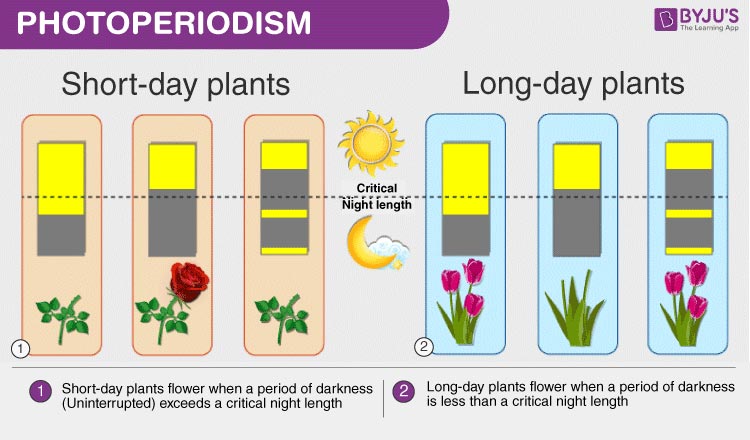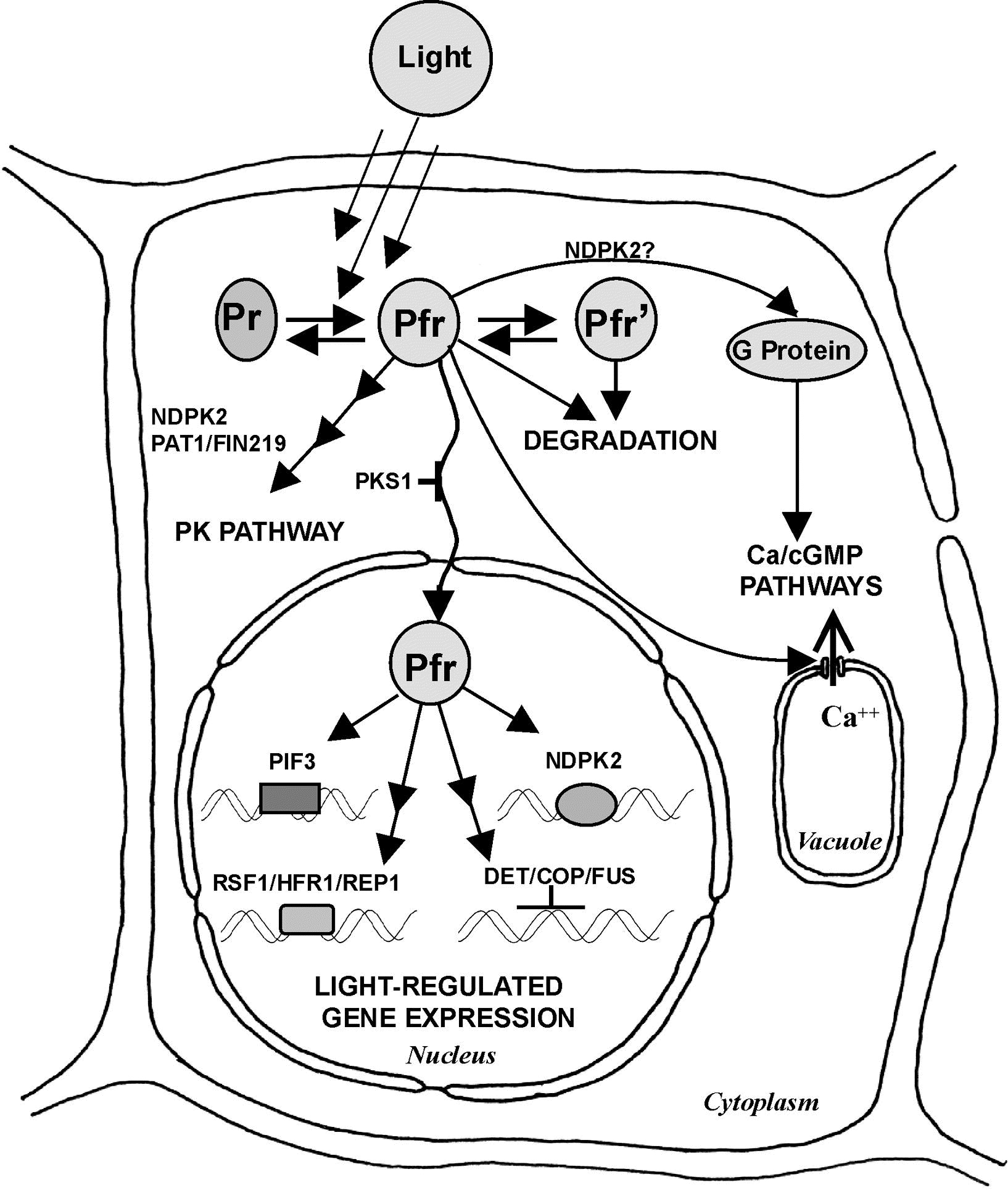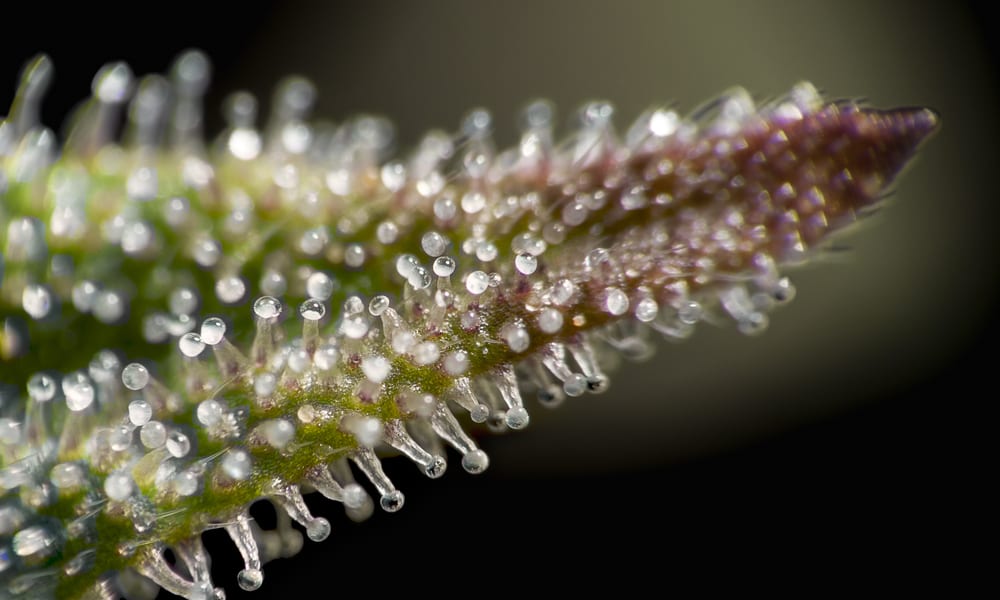Photoperiodism and Flowering
Photoperiodism is the plant's response to photoperiod changes (changes in the length of daylight and night). Just like humans, plants have a circadian rhythm, which tells them what time is day and night. It is endogenous, meaning that it does not require external cues such as sunlight to proceed, but it is less accurate when no external cues are provided.

Let's take a look at how phytochrome changes throughout the plant's life:
- Pr is synthesized in plant cells inside the cytoplasm.
- Pfr is the active form of phytochrome.
- During daylight, Pfr accumulates because Pr is converted to Pfr by the red light in sunlight. Additionally, because of some far-red light in sunlight, some of the Pfr is converted back into Pr.
- During the night, the Pfr levels drop. Pfr degrades faster than Pr and there is no sunlight to continue the conversion from Pr to Pfr, so the levels of Pfr drop.
- When the day comes again, light converts the Pr to Pfr.
- Unlike humans, which are affected by the daylight, for plants, the night length resets the plant's circadian clock. Brief dark periods during the day do not influence the circadian rhythm clock, but flashes of red light in the night can reset the clock. The red light has a strong influence on the plant due to the Pr being converted into Pfr.

Different species of plants have different flowering times based on their photoperiod. There are primarily 3 different types of flowering plants:
- Long-day plants flower in the spring and in early summer, which is when the daylight is increasing. When the daylight begins to exceed a certain time length or the night drops below a certain night length, these plants begin to flower.
- Short-day plants flower in late summer and early fall, which is when daylight is decreasing. When the daylight drops below a certain day length or when the night exceeds a certain night length, the plants start to flower.
- Day-neutral plants are plants that consistently flower at the same time regardless of the day or night length. Instead, external cues such as temperature and water trigger flowering.
Florigen, a plant hormone, is produced in leaves and then transported to the apical meristems of the plant, triggering flower development.
Plant Response to Biotic Stimuli
Plants have many defensive mechanisms to defend themselves from herbivores. There are a few types of defenses that different species of plants utilize:
- Structural defenses are plant defenses that can physically damage a predator. Examples are thorns, spines, and trichomes (irritating hairs). Some trichomes can release noxious chemicals when touched.
- Chemical defenses cause plant predators to be infected by toxic substances that can lead to death.
- Plants can also recruit animals or other plants to protect them. For example, parasitoid wasps attack insects on the plant. When the insects chew the plant, the plant begins to release chemicals that attract the wasps. Being parasites, the wasps lay their eggs on the host insects. The eggs hatch and the larvae feed on the host, causing the host insect to die. The larvae grow to become adults. In this way, both the plant and the wasps benefit.
- Plants can also signal other plants when herbivory ensues. The plant releases chemicals, which signal plants nearby, allowing neighboring plants to have a chance to mount defense.

